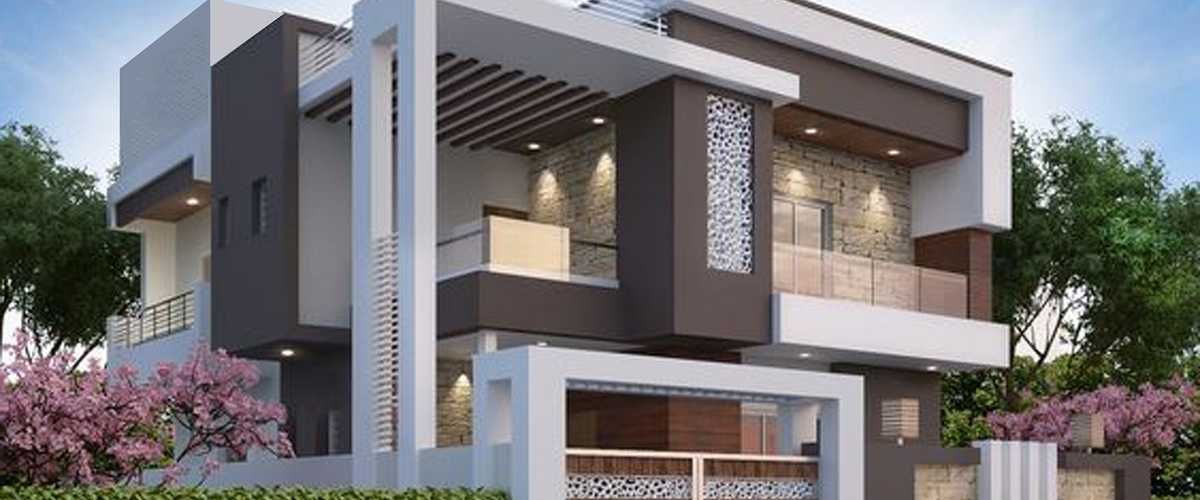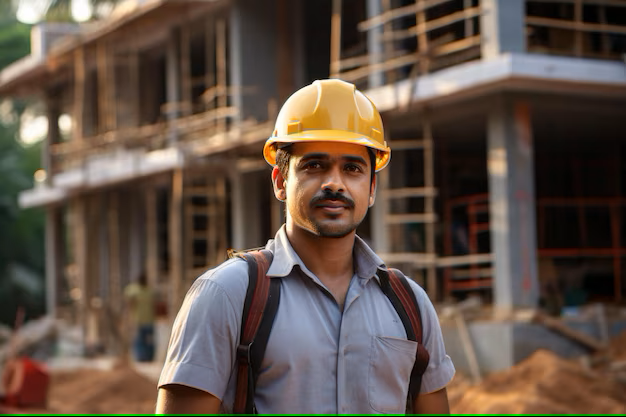Introduction
Building your dream home in India is more than just constructing four walls and a roof; it’s about creating a personal sanctuary that reflects your aspirations, cultural values, and lifestyle choices. In a country where homeownership is deeply intertwined with emotional and social significance, the journey of constructing your own home can be both exciting and overwhelming. Whether you’re a first-time builder or looking to create your retirement haven, understanding the intricacies of home construction in India – from navigating legal requirements and choosing the right location to incorporating vastu principles and modern sustainability features – can make the difference between a stressful experience and a rewarding one. This guide will walk you through the essential aspects of building your dream home in India, helping you transform your vision into reality while avoiding common pitfalls along the way.
- Overview of the Indian real estate market and the growing demand for custom-built homes
The Indian real estate market has witnessed remarkable growth over the past decade, with the residential sector emerging as a key driver of this expansion. As of 2024, the market is valued at approximately USD 200 billion and is projected to reach USD 1 trillion by 2030, reflecting the robust demand for housing in the world’s most populous country. This growth is particularly evident in the custom-built homes segment, which has seen a significant uptick as increasingly affluent Indian homeowners seek personalized living spaces that reflect their lifestyle and aspirations.
The surge in demand for custom-built homes in India can be attributed to several factors, including rising disposable incomes, urbanization, and a shift in consumer preferences toward uniquely designed residences. Metropolitan cities like Mumbai, Bangalore, and Delhi-NCR are leading this trend, with a growing number of homeowners opting for bespoke construction over pre-built properties. According to recent industry reports, the custom home construction sector has experienced an annual growth rate of 15-20%, outpacing the broader real estate market. This trend is further supported by the availability of sophisticated construction technologies, improved access to housing finance, and a more organized approach to custom home building through professional architects and contractors.
Planning and Budgeting
- Factors to consider when planning your dream home (e.g., location, size, number of bedrooms and bathrooms, etc.)
When planning your dream home in India, several critical factors demand careful consideration to ensure long-term satisfaction and value. Location stands as perhaps the most crucial decision, as it impacts not only your daily lifestyle but also future property appreciation. Consider proximity to essential amenities like schools, hospitals, and markets, as well as connectivity to major transportation hubs. The neighborhood’s safety, development potential, and vulnerability to natural disasters should also factor into your location choice.
The home’s size and layout must align with both your current needs and future expectations. While determining the number of bedrooms and bathrooms, consider your family’s growth potential and the possibility of accommodating elderly parents or frequent guests. Modern Indian homes typically feature a minimum of three bedrooms, with larger properties incorporating additional spaces like a home office, pooja room, or servant quarters. The orientation of rooms should maximize natural light and ventilation while respecting Vastu Shastra principles, which many believe contribute to positive energy flow within the home.
- Creating a realistic budget and understanding construction costs in India
When planning to build your dream home in India, creating a realistic budget requires careful consideration of multiple cost factors that can vary significantly based on location, materials, and construction quality. As of 2023-24, construction costs in India typically range from ₹1,500 to ₹5,000 per square foot for residential properties, with premium constructions potentially exceeding these figures in metropolitan areas. This base cost encompasses fundamental elements such as structural work, basic finishes, and standard fixtures, but excludes land costs, which can comprise 40-60% of your total investment depending on the location.
A comprehensive budget should account for various components including foundation work (10-15% of construction cost), structural framework (15-20%), walls and internal finishes (20-25%), electrical and plumbing systems (15-20%), and external developments (5-10%). It’s crucial to maintain a contingency fund of at least 10-15% of your total budget to address unexpected expenses, price fluctuations, and potential modifications during construction. Additionally, factor in professional fees for architects (3-5%), structural engineers (1-2%), and necessary permits and approvals (2-3%) to ensure a more accurate financial projection for your project.
Choosing the Right Location
- Factors to consider when selecting a location for your dream home (e.g., proximity to work, schools, public transportation, etc.)
When selecting the ideal location for your dream home in India, several critical factors demand careful consideration to ensure long-term satisfaction and value appreciation. The proximity to your workplace or business district should be a primary concern, as Indian cities often experience significant traffic congestion that can impact your daily commute and quality of life. Additionally, access to quality educational institutions is crucial, particularly in urban areas where top-rated schools often have long waiting lists and limited admission zones.
Infrastructure and connectivity should also weigh heavily in your decision-making process. Evaluate the availability of public transportation options, including metro stations, bus routes, and major arterial roads. The neighborhood’s development status and future growth potential are equally important – look for areas with planned infrastructure improvements, upcoming commercial developments, and civic amenities. Consider the proximity to healthcare facilities, shopping centers, and recreational spaces, as these contribute significantly to comfortable living. Furthermore, research the area’s susceptibility to natural disasters, water supply consistency, and power backup facilities, as these factors can significantly impact your daily life and property value in the long run.
- Tips for evaluating the potential for future development and appreciation in value
When evaluating a property’s future potential in India, it’s crucial to analyze both micro and macro development indicators in the area. Key factors include upcoming infrastructure projects like metro lines, highways, or commercial complexes, as well as the presence of established educational institutions and healthcare facilities. Additionally, study the city’s master plan to understand zoning regulations and proposed land use changes, as these can significantly impact property values over time.
The neighborhood’s current growth trajectory and socio-economic profile also play vital roles in determining future appreciation. Look for areas with improving civic amenities, rising income levels, and increasing commercial activity. It’s advisable to research historical price trends in the locality and adjacent areas, as this can provide insights into potential appreciation patterns. Consider consulting local real estate experts and urban planning authorities to gather information about upcoming government initiatives or private sector developments that could enhance the area’s desirability and, consequently, your property’s value in the coming years.
Designing Your Dream Home
- Overview of different architectural styles and designs popular in India
Indian architectural styles represent a rich tapestry of cultural influences, ranging from traditional to contemporary designs. The most prevalent styles include the classic Indo-Aryan architecture, characterized by its pyramidal roofs and ornate details; the Dravidian style, known for its stepped pyramidal towers and intricate sculptures; and the Indo-Islamic architecture, which features domes, arches, and geometric patterns. Modern Indian homes often blend these traditional elements with contemporary minimalism, creating unique fusion designs that cater to both aesthetic preferences and practical living requirements.
In recent years, sustainable and climate-responsive architecture has gained significant traction in Indian home design. This approach incorporates traditional wisdom, such as courtyards (aangan) for natural ventilation and thick walls for thermal regulation, with modern eco-friendly technologies. Popular contemporary styles include the tropical modern, which emphasizes indoor-outdoor living spaces with large windows and natural materials; the industrial chic, featuring exposed brick and metal elements; and the neo-traditional style, which reinterprets classical Indian architectural elements through a modern lens. Each of these styles can be adapted to suit different regional climates, from the humid coastal areas to the arid inland regions.
- Importance of incorporating sustainable and eco-friendly features into your design
In today’s environmentally conscious world, incorporating sustainable and eco-friendly features into your dream home isn’t just a trend—it’s a responsibility and a smart long-term investment. From solar panels and rainwater harvesting systems to energy-efficient windows and natural ventilation designs, these elements can significantly reduce your home’s environmental impact while delivering substantial cost savings over time. The Indian climate, with its abundant sunlight and seasonal rainfall, presents perfect opportunities to harness natural resources effectively.
Modern sustainable home design in India goes beyond just installing green technologies; it encompasses thoughtful architectural choices that respond to the local climate and environment. This includes incorporating traditional wisdom like courtyard designs for better air circulation, using locally sourced and eco-friendly building materials, implementing proper waste management systems, and designing spaces that maximize natural light while minimizing heat gain. These features not only contribute to environmental conservation but also comply with India’s increasingly stringent green building regulations, potentially qualifying your home for various government incentives and certifications like GRIHA (Green Rating for Integrated Habitat Assessment).
- Consequences of neglecting quality control and safety measures
Neglecting quality control and safety measures during home construction can lead to severe and often irreversible consequences that extend far beyond immediate financial implications. Poor construction quality can manifest in structural defects, such as cracks in foundations, walls, and slabs, compromised load-bearing capacity, and inadequate waterproofing, all of which can significantly reduce the lifespan of your property and pose serious safety risks to occupants. Furthermore, substandard electrical installations and plumbing systems can result in frequent maintenance issues, higher utility bills, and potential hazards like short circuits or water damage.
The repercussions of overlooking safety protocols during construction can be particularly devastating, potentially resulting in accidents, injuries, or even loss of life. Non-compliance with building codes and safety standards can also lead to legal complications, including hefty fines, mandatory reconstruction, or difficulty in obtaining occupancy certificates. Additionally, properties with known quality issues typically experience substantial depreciation in market value and may become increasingly difficult to sell or rent out. Insurance companies may also refuse coverage or charge higher premiums for buildings that don’t meet standard safety requirements, leaving homeowners vulnerable to significant financial exposure in case of accidents or natural disasters.
Conclusion
In conclusion, constructing your dream home in India is an endeavor that goes beyond mere bricks and mortar; it is an investment in your future and a testament to your unique identity. By considering the various factors outlined in this guide—ranging from legal prerequisites to aesthetic choices that honor your cultural heritage—you can navigate the complexities of home building with confidence and clarity. Remember, your home is not just a shelter; it is a space where memories will be forged and cherished for years to come. Embrace the opportunity to create a personalized sanctuary that embodies who you are and what you love. So, take the first step today—start envisioning your dream home and explore the possibilities that await you. Your ideal living space is just a blueprint away!



